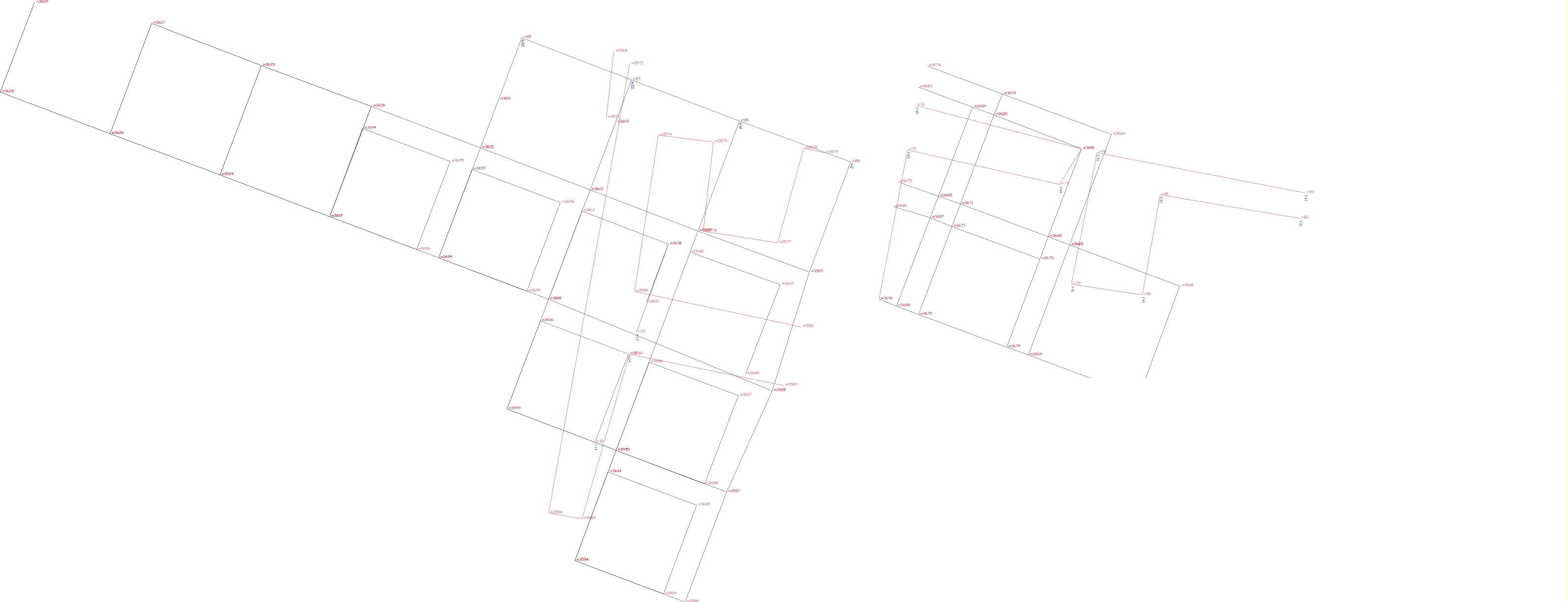Back to top: Overview of Unit J2
The pertinent areas
JP is the main area to which unit J2 belongs. JP refers to the larger area of the link between the Plaza and temple terrace. It includes several excavation units including, J1, J3, J4, J5, J6 and J7 in addition to J2 which is discussed here.
Back to top: Overview of Unit J2
Location
|
J2 is situated on the hinge separating the temple terrace area from the Plaza. It serves as the access, or connection point, between the two places. The excavated area of J2 is approximately 25m East to West and 25m North to South. There was originally an additional 15m extension to the East but those three loci (k33, k43, and k53) were eventually subsumed under J3 (see below). Furthermore, the eastern-most loci (k82, k83, and k84) became part of J4 and J6. Eventually the size of J2 became restricted to about 25m North-South and 20m East-West. |
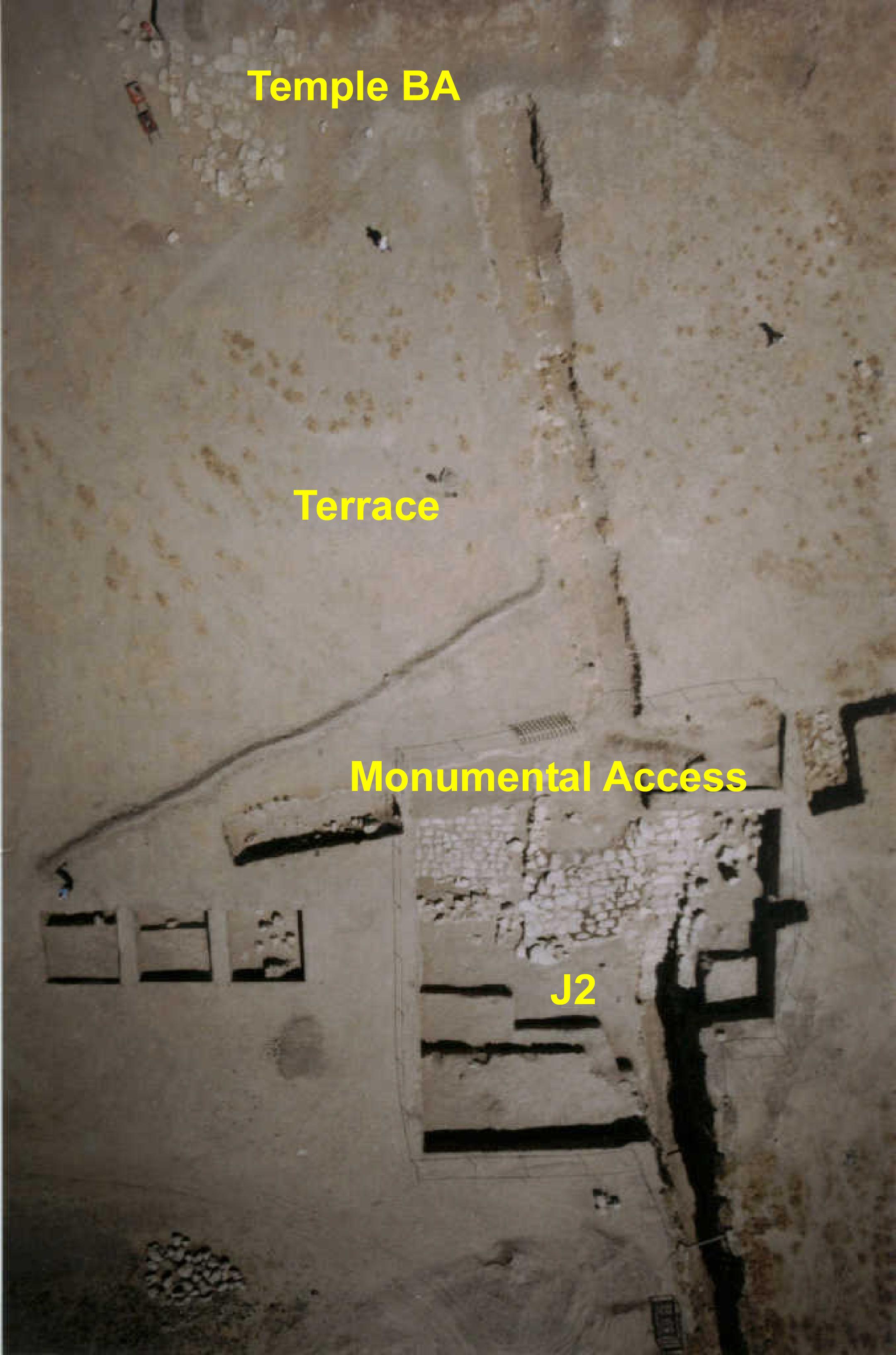 Temple area visible to North of J2 |
Back to top: Overview of Unit J2
Phases
The complete depositional sequence is discussed in detail under Depositional History and the specifics of each Phase can be explored by clicking the individual link. The complete chart of all phases identified at Mozan is found separately.
| Phase 3b Phase 3b | The earliest material recovered so far in J2 dates to this phase. The base of the lower staircase has not been uncovered as of end of excavations but based on comparisons with other areas of JP it seems likely it belongs to this phase. It is possible that this structure may be dated to an earlier phase since the base of the structure has not yet been reached. |
| Phase 3 Phase 3h Phase 3j Phase 3l Phase 3m Phase 3n Phase 3p Phase 3s Phase 3u | Phase 3 is the most important phase in the development of J2. It is the period of construction and use of the monumental access. It dramatically altered the shape and use of the J2 area. The monumental access continued to be utilized throughout this period with the build-up of floors associated with the use of area. Toward the end of this phase, some modifications were made to protect and reinforce the construction which was threatened by erosion and water damage. |
| Phase 4 | There are no deposits in J2 dating to Phase 4 although Phase 4 layers were identified in neighboring J6. The lack of Phase 4 may possibly be due to the effects of erosion which may have removed the deposits. |
| Phase 5 Phase 6 | There are no deposits in J2 dating to either Phase 5 or Phase 6. |
| Phase 7 Phase 7c Phase 7f Phase 7j Phase 7m Phase 7v | Phase 7 is the Mittani period and it was characterized by small constructions and use, erosion, and an expansive brickfall. After the brickfall the area was reused and eventually the revetment wall was completely covered with accumulations. |
| Phase 8 Phase 8m Phase 8r | Phase 8 is the end of use in J2 with large stones placed across the area after it had been filled with deposits. This reflects the memory of the sacral nature of the area, despite the fact that the monumental access was no longer in use. Eventually the area was no longer considered sacred and it was used for everday activities. In the upper layers there are some tannurs and work areas. |
| Phase 9 Phase 9m Phase 9p | Phase 9 represents the modern build-up of accumulations such as topsoil and also includes excavations and cuts that preceded the J2 excavations. |
Back to top: Overview of Unit J2
Physiognomy
| The physiognomy of J2 before beginning was primarily defined by the previous excavations. There were several trenches cutting across J2 from the excavations in 2001 (within unit C2) under the direction of P. Pfälzner. These excavations had exposed the monumental staircase (^stair2) as well as portions of the temple terrace. After the discovery of the revetment wall (^wall1) the excavations continued only to south of the wall, thereby serving to unbalance to the excavations with some loci excavated down several meters, while others were stopped after only meter or less. The direction of the excavations was primarily dictated by the position of the monumental access, with the goal of the excavation becoming to both reach the base of the revetment wall and the lowest step of the apron. With the k100 sounding in 2005, another structure (f380) was discovered below the first staircase. This led to further excavations in k100 in 2009 (see the Chronicle section for more information on the timeline). As a result of this sounding the excavations in k100 are now lower than in any other locus. The current physiognomy of J2 reflects the ancient appearance of the area rather than the relatively flat area that was encountered by the modern excavators. |
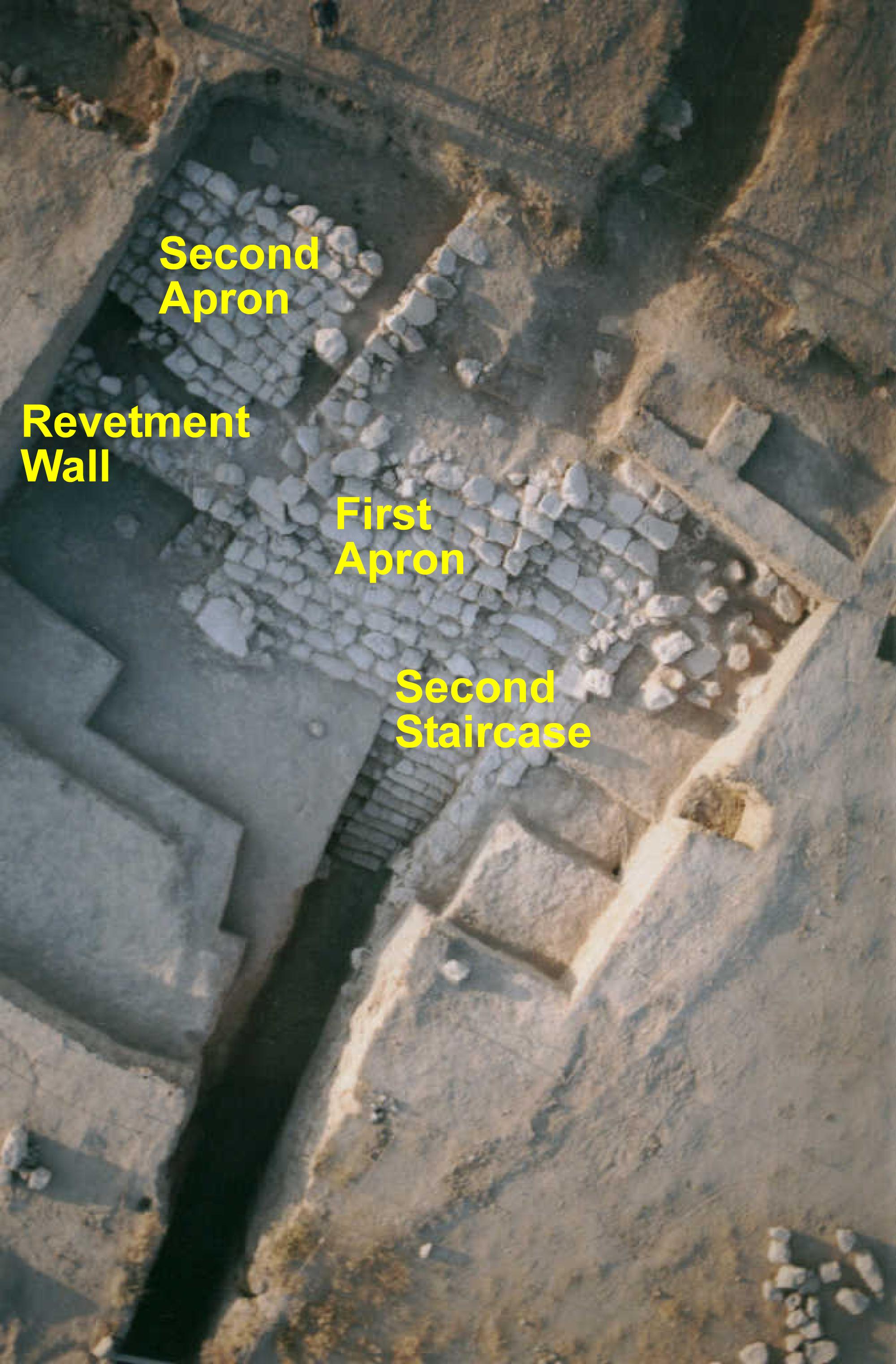 J2 End of 2004 Excavations |
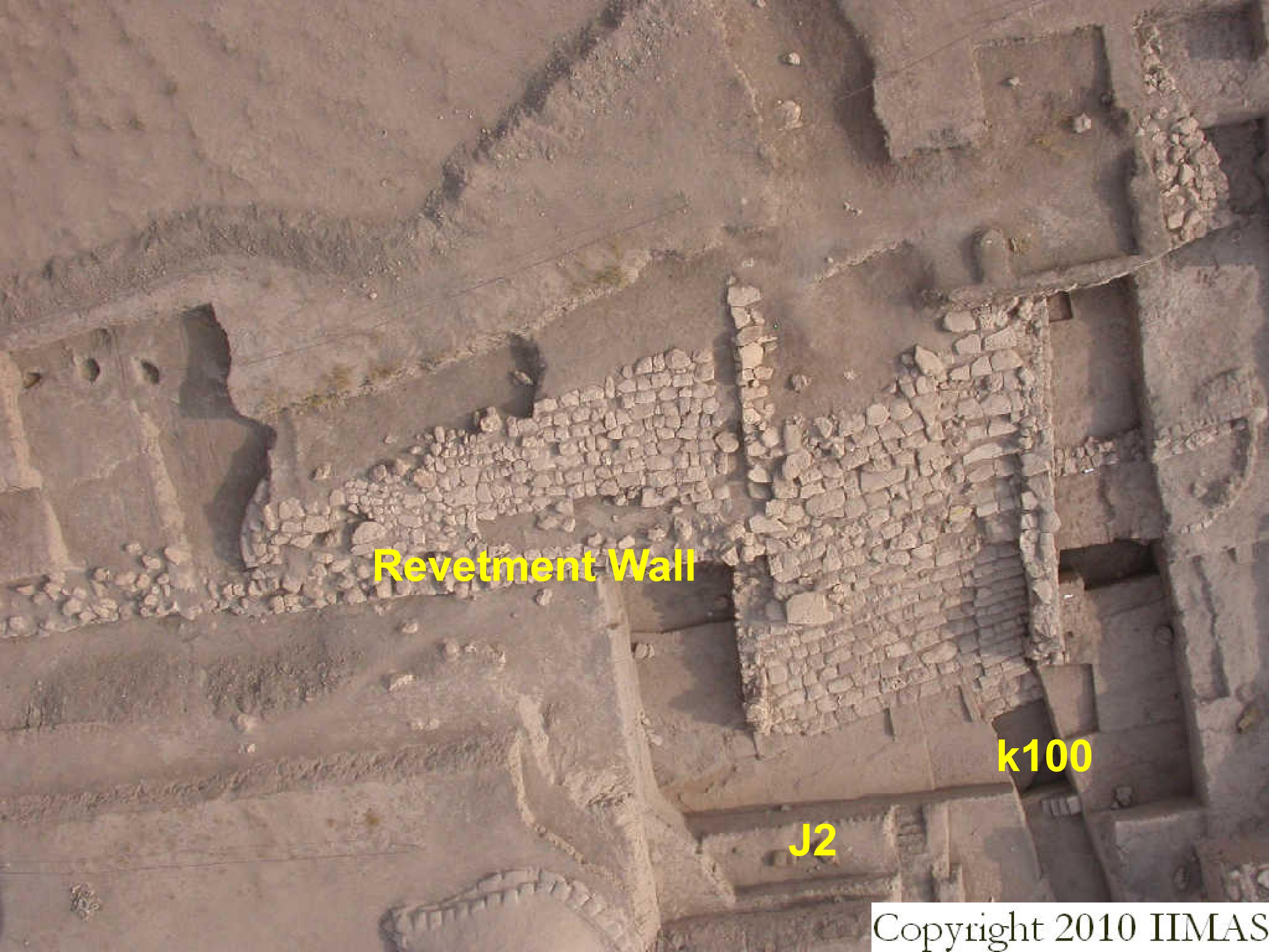 Excavations end of 2009 |
Back to top: Overview of Unit J2
Beginning of excavations
Back to top: Overview of Unit J2
End of excavations as of 2009
|
After a gap of 3 years, excavations resumed in 2009. The excavations were detailed and small compared to the previous J2 excavations. The picture at right shows the state of J2 at the end of J2 excavations. The main squares defined at the beginning of the excavations have remained the same throughout all seasons with only a slight variation and the addition of k110. The squares that form the main portion of the excavation are k3, k4, k5, k13, k14, k15 and k100. This 15m x 15m area along with the trench of k100 forms the core of the excavation that exposes the revetment wall, apron and staircase. Because J2 was originally so large some loci were later assigned to other books that were opened later. Loci k33, k43, and k53 along with k23 and k24 were eventually reassigned to the unitbook J3. The loci k82, k83 and k84 were reassigned to J4 and J6. Furthermore, k111 is more aptly refered to as k6 in J7 as it was excavated as both but with a much larger portion recorded in the J7 book. The J2 excavations were successful in reaching the base of the revetment wall and exposing the apron and staircase. In achieving this goal some loci were excavated down several meters while others, north of the revetment wall were only excavated down about a meter or less. |
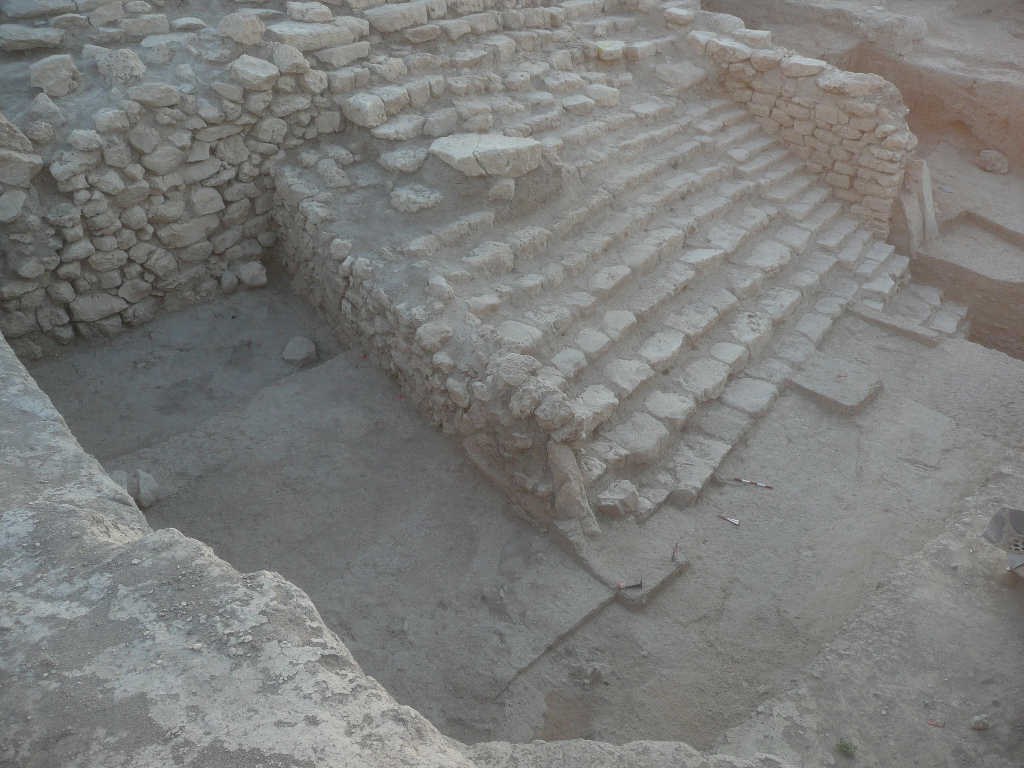 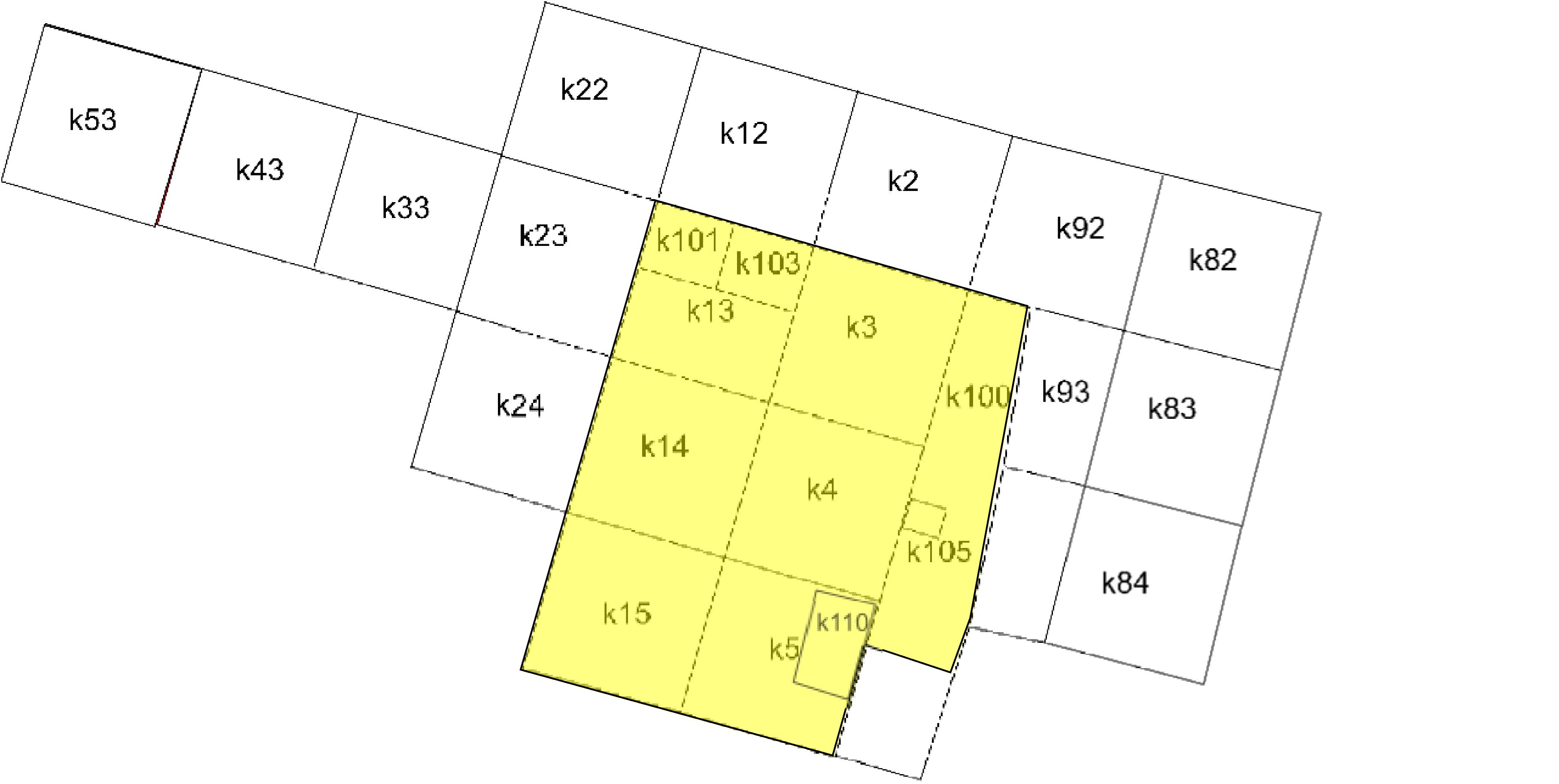 |
Back to top: Overview of Unit J2
Main results
The main results of the three seasons may be summarized as follows.
- Exposure of the revetment wall.
- Discovery of the monumental accessway.
- Earlier constructions below the monumental access.
- Mittani restructuring of the area.
- Large ceramic inventory and attendant statistics.
Back to top: Overview of Unit J2
General statistics
Below are some of the major figures relating to the J2 book. More details can be found in the data set section.
| approximate cubic meters | 750 |
| total number of features | 392 |
| total number of items | 966 |
| total number of q-lots | 902 |
| total number of sherds | [not processed in this version] |
| total number of output files | 14,203 |
| total number of records | 3,336,903 |
| total number of hyperlinks | 1,110,784 |
| total number of photographs | [not processed in this version] |
| total number of drawings | [not processed in this version] |
| total file size (with low resolution graphic files) | 1,189,472 |
Back to top: Overview of Unit J2
